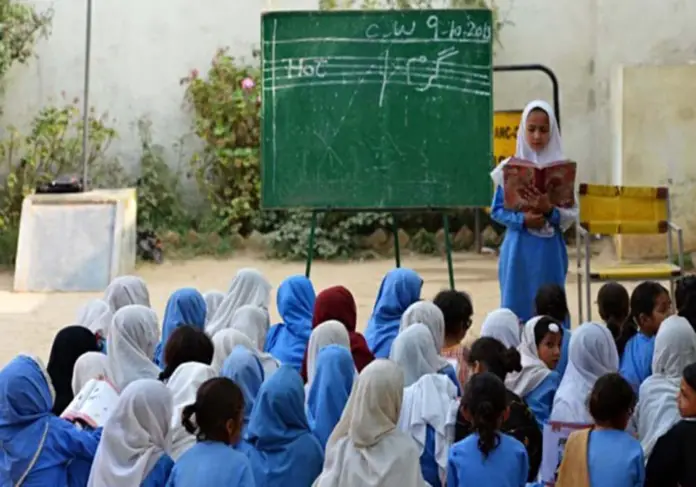Alif Ailaan reports that 76 percent of Balochistan’s girls are out of schools with a primary enrollment of 322,000 girls; out of which only 20,046 persist after they finish their matriculation. With only a few high schools and 41 inter and degree colleges for girls in the province, accommodating more than 300,000 students would mean to average more than 120 students per class, and absent teachers, poverty, long distances and non-availability of much-needed facilities such as sanitation, that would add more to the worry of the female students leading them to quit their education in disappointment midway.
Balochistan is the richest-in-resources province of Pakistan with a small population of 12.34 million, but still the most neglected among all the four provinces – especially when it comes to education, health and employment. Girls, in particular, are going through challenging times owing to a crises of educational facilities despite the constitution of Pakistan and the human rights charter of United Nations declaring education as the basic human need.
Last week, we witnessed college girls of Shahrak, Shapuk, Sami and Herronk (villages in the east of Turbat some 28, 34, 44 and 60 kilometers away from the city respectively) appear in Turbat Press Club to hold a press conference on lack of transportation. They complained that their college bus, which was functional prior to the summer vacations, had been kept in store for ‘being out of order’. The students said in their press conference that they went to the college principal to ask her for repairing the bus, but she excused and said it would cost six lakhs and the college account was already full in debt with Rs0.8 million in loans.
It astonishes one to discern a government college making justification of being in arrears of around one million and government is nowhere in the picture. If it is really so, one wonders, how about the annual budget which the college receives? The students, while addressing the media personnel, alleged the principal of bagging the budget and making excuse of lends.
Balochistan’s poverty ratio is not a secret to anyone. Zahoor Ahmed Buledi, the provincial minister for planning and development, and the representative of the given constituency, furnished the report of multi-dimensional poverty index in a recent one day “Advocacy Workshop on Poverty Dynamics, Inclusive Development and Women’s Empowerment” on Tuesday (December 8) that the province’s “over 70 percent people are living in poverty”. On the other hand, the college girls of the above-mentioned villages have to pay Rs4,000 monthly to hire a car to transport them to the college in Turbat. Amidst such a realm, how can poor parents send their girls to college when they have no third option on the page? It ultimately leads them to stop their girls from going to college and prefer spending the money in raising them.
One of the remaining options for the college girls of Turbat to pursue their education at college level, as it was previously, is to solely appear in the examinations and to continue their self-study from homes so that they may secure admissions in a recognised university after their intermediate, but the principal has ordered to strike off the names of the absent students. “We are given an ultimatum to get our names re-admitted by ensuring our presence in college and paying the fine of Rs500 which our parents cannot afford,” protesting student said in the press conference. Such a tactic, on the other end, unfortunately, would encourage the parents of these girls to issue a full-stop to their children’s educational careers.
Balochistan is already struggling to improve its literacy rate. Only 24 percent literate women cannot make it to a higher level of development which is a prerequisite to change the fate of the province. As it needs both men and women to make a difference in the everyday life of the people of Balochistan, keeping most of the girls intentionally away from education can only worsen the already declining education system of the resourceful province. However, it is yet to be seen if the provincial government, with the help of the federal government, brings about possible reforms in education of the province’s girls in one way or the other way to get more girls enrolled in educational institutions.







